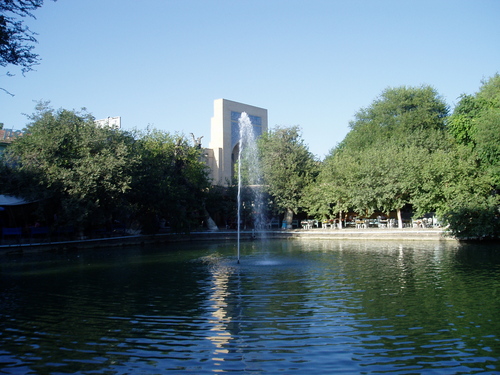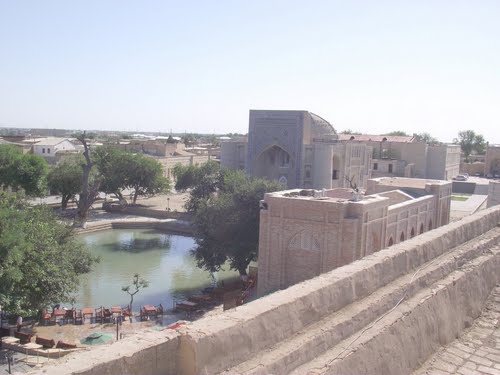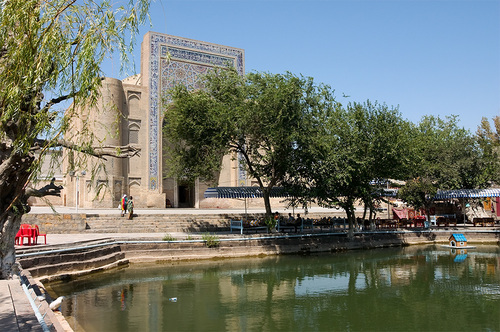Lyab-i Hauz or Lyab-i Khauz, is the name of the area surrounding one of the few remaining hauz that have survived in the city of Bukhara. Until the Soviet period there were many such ponds, which were the city's principal source of water, but they were notorious for spreading disease and were mostly filled in during the 1920s and 1930s. The Lyab-i Hauz survived because it is the centrepiece of a magnificent architectural ensemble, created during the 16th and 17th centuries, which has not been significantly changed since. The Lyab-i Hauz ensemble, surrounding the pond on three sides, consists of the Kukeldash Madrasah (1568-1569) and of two religious edifices built by Nadir Divan-Beghi: a khanaka (1620) and a madrasah (1622), that stand on the west and east sides of the pond respectively. The small Qazi-e Kalyan Nasreddin madrasah was formerly located beside the Kukeldash madrasah.
History
The history of this ensemble is closely connected with the name of Nadir Divan-Beghi, who was an important grandee, vizier, and also an uncle of the Emir of Bukhara Imam Quli Khan. It is said that when Nadir Divan-Beghi built the Khanaka which bears his name, near the site of the building there was a large holding owned by an old Jewish widow. Nadir Divan-Beghi had decided that this site would be the perfect place for a pond, but the widow turned down his offer to buy the property. Then Nadir Divan-Beghi brought her before Imam Quli Khan in the hope that the Emir would coerce her into selling. The Emir of Bukhara ordered a congress of muftis to inquire into the question. However, these specialists in Muslim law decided that there was no legal way to purchase the property, other than with the widow's consent, since Jews had rights on a par with Muslims if they paid the Jizyah or poll-tax on non-Muslims.
So, Nadir Divan-Beghi had to build a small reservoir near the house of that stubborn Jew. But he dug an aryk, an irrigation ditch, to his new pond in such a way that the water ran right near her house, although it was more expensive. Soon the water began to undermine the foundations of the widow's house. When she came to Nadir Divan-Beghi for justice, he confirmed his readiness to buy her house for a fair price. But widow rejected the money, laying down her own conditions instead. She promised give up her property if the Bukharan rulers would give to her another piece of land with permission to build a synagogue. In return for the widow’s holding Nadir Divan-Beghi gave her a plot of land, belonging to him, in a residential area, which later was named the Jewish quarter.
Soon the first synagogue at Bukhara and a large pond were built. People started to call it Lyab-i Hauz, which means in Persian "by the pond". The date of its construction is about 1620.









